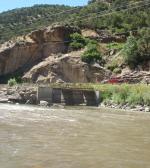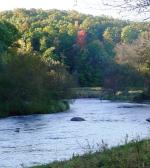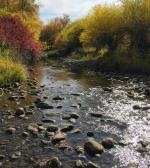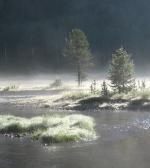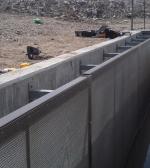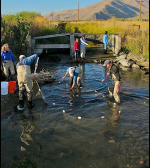Conservation Opportunities
The National Conservation Agenda is set by the National Leadership Council of Trout Unlimited, a body of representatives from the grassroots and volunteer leaders.
Climate Change and Global Warming
A changing climate is perhaps the greatest long-term threat to trout and salmon habitat there is, but TU, using the best science available, is doing its best to arm North America’s coldwater streams for rising temperatures, fluctuating water levels and unpredictable weather, all with intent to ensure coming generations enjoy the same—or better—opportunities to fish for trout and salmon in the years to come.
Roads and Development
Our country is blessed with millions of acres of public lands, the best of which is still wild and remote and teeming with fish and game. But as development takes hold, we lose precious backcountry, which directly impacts trout and salmon habitat. As a result, we, as anglers, lose opportunity. TU is working with all parties to protect the best of what’s left of our irreplaceable “roadless” habitat on public lands in hopes of protecting the best hunting and fishing left in America.
Agriculture
For generations, agricultural practices largely ignored vital fish and game habitat in favor of crop yield, often with disastrous results. In recent years, agricultural producers—often with the help and assistance of groups like Trout Unlimited—have come to realize that healthy habitat not only protects America’s fishing and hunting heritage, but also results in healthy yield. TU works with farmers and ranchers all over America to economize water use, restore trout and salmon streams to habitable conditions and upgrade basic practices that benefit both production and irreplaceable habitat. That, of course, means better fishing today, and for years to come.
Aquatic Invasive Species
From whirling disease and “rock snot” to invasive species like New Zealand mud snails and exotic fish species, America’s trout and salmon streams are under attack from all fronts. Trout Unlimited works with anglers and state and federal agencies to slow the spread of exotic invaders that are impacting our trout and salmon populations and our opportunity to pursue them. We’re educating anglers to help prevent new infestations, and we’re working to directly remove invasive species from waters where they don’t belong.
Forestry
Over the years, irresponsible logging has taken its toll on salmon and trout stream, particularly in the Northwest, where many runs of salmon and steelhead are now endangered thanks to limited spawning and rearing habitat in logging-impaired watersheds. In recent years, TU has worked with industry and state and federal agencies to improve logging practices, and to identify quality habitat that should be safeguarded in perpetuity in order to protect our irreplaceable salmon and trout streams, and our opportunity fish for these prized species.
Dams
For more than 200 years, much of America’s progress has come at the expense of free-flowing rivers. We’ve erected thousands of dams to impound water, improve irrigation and quench our thirst. Unfortunately, these dams also block vital habitat for migrating fish, including trout and salmon. For years, TU has worked collaboratively to remove aging and obsolete dams, improve dams without fish passage and prevent unneeded dam construction, all for the benefit of fish … and fishing.
Energy Development
New technologies have allowed for expanded shale gas and oil development across the country. This development in happening in places that are important to hunters and anglers—places like northern Appalachia, across the West, in the Pacific Northwest and other places where trout and salmon live. TU supports responsible energy development, when it is done in the right places with the right safeguards. Working with sportsmen and women, the energy industry, and state and federal partners, we have had success in protecting critical fish and wildlife habitat from drilling-related impacts—the very areas where sportsmen and women hunt and fish. By mobilizing sportsmen both in the East and in the West to direct energy development away from high-value hunting and fishing areas, we are working to protect our sporting heritage for future generations.
Abandoned Mines
More than 27,000 stream miles are polluted from abandoned mines across the nation. These historic coal and hard-rock mines taint otherwise healthy trout streams with heavy metals and acidity that, in some cases, impact trout waters for miles downstream. TU, working with partners in the mining industry and with state and federal agencies, is cleaning up old mine sites and making these streams habitable and fishable once again.

